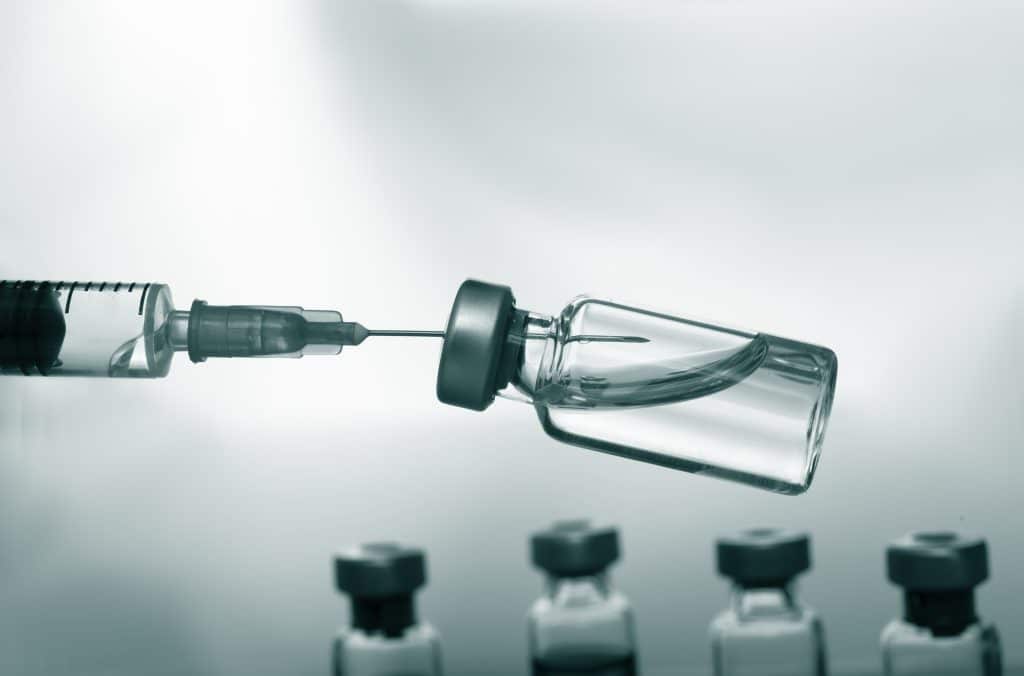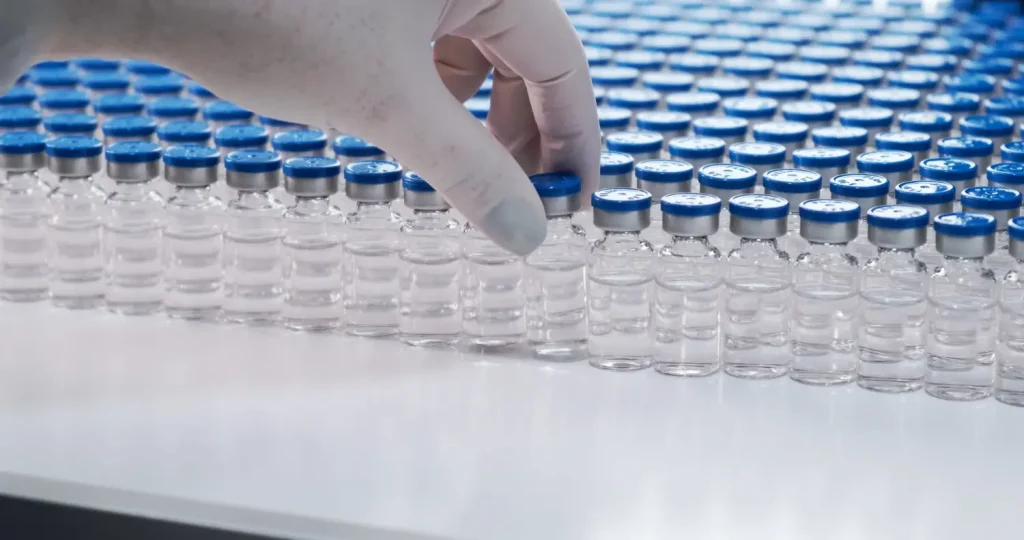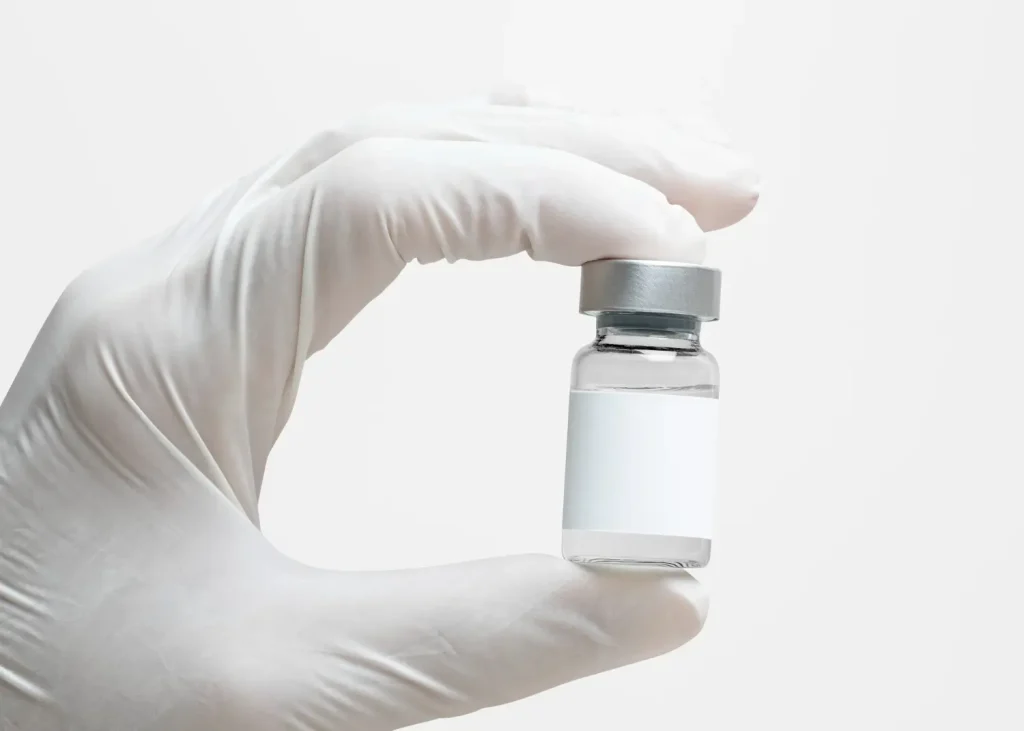Choosing the right treatment for aesthetic and therapeutic purposes presents a maze of options, each claiming superiority over the others. Within this competitive field, Xeomin stands out not only for its FDA approval but also because it is a double-filtered neurotoxin, distinguishing itself from other Botulinum toxin type A products.
This unique feature implies that understanding its composition and ingredients becomes crucial for medical professionals aiming to offer optimal patient care.
With years dedicated to studying and applying neurotoxin treatments in clinical settings, my experience has granted me insights into the subtle nuances that set Xeomin apart. The key lies in its refined formulation—a topic we’ll delve into with clarity and simplicity.
Key Takeaways
- Xeomin contains botulinum toxin type A, which relaxes muscles and smooths wrinkles. Its unique double filtration process removes extra proteins, making it a pure form of treatment.
- Inactive ingredients in Xeomin, like human serum albumin and sucrose, act as stabilizers for safety and effectiveness. These make Xeomin injections safe with minimal risk for disease transmission.
- Patients can see improvements from Xeomin treatments as soon as four days after injection, with effects lasting up to four months. This quick onset and duration help boost patient satisfaction.
- Education on the differences between Xeomin and other botulinum products is key for informed decision-making. Understanding its specific benefits allows patients to choose the best option for their needs.
- Medical professionals should explain the significance of Xeomin’s composition to patients, including its FDA approval status and how it compares to alternatives like Botox or Dysport in achieving desired aesthetic outcomes.
Overview of Xeomin’s role in medical aesthetics and therapeutic applications
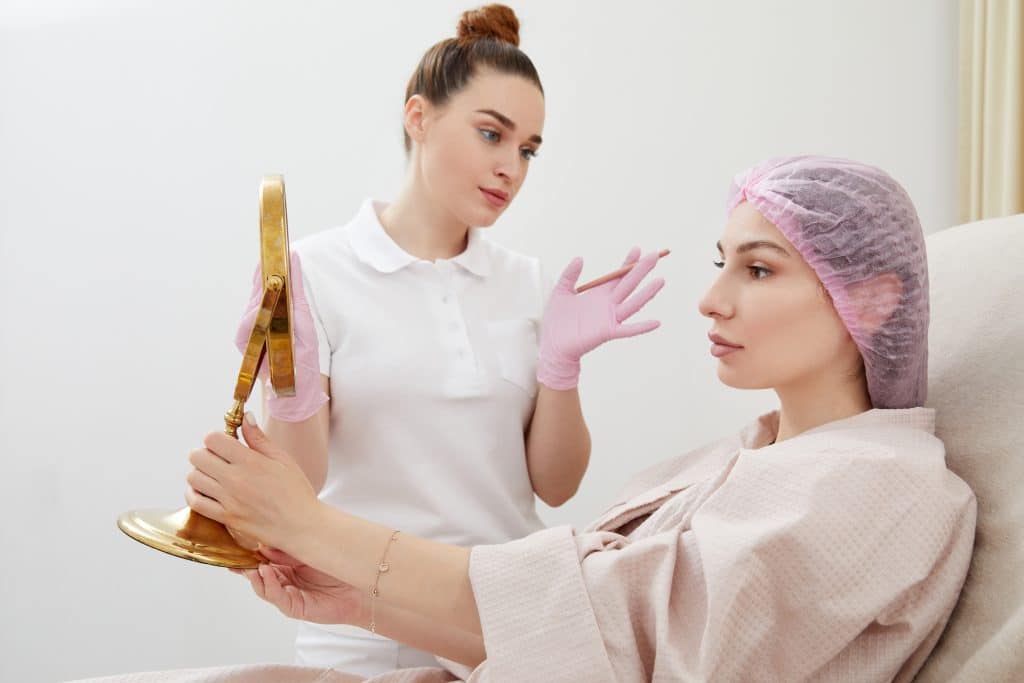
Xeomin plays a critical role in both medical aesthetics and therapeutic applications, marking its importance across various treatments. A key player in the world of muscle relaxants, Xeomin has found its place in softening frown lines and managing conditions like chronic drooling (sialorrhea) and upper limb spasticity.
Its ability to block acetylcholine from neuron to muscle effectively inhibits unwanted muscle contractions—making it a go-to solution for those aiming for smoother skin or seeking relief from certain medical conditions.
During my first-hand experience with administering Xeomin for patients dealing with severe frown lines, the results spoke volumes about its efficacy. Patients noticed visible improvements, which not only enhanced their appearance but also boosted their confidence significantly.
As someone who has directly seen the impact of this treatment, I can say that Xeomin is indeed as effective as other botulinum toxin products like Botox, if not more so in some cases.
Seeing is believing – witnessing firsthand the transformative power of Xeomin solidified my trust in its effectiveness.
Importance of understanding its composition and ingredients
Knowing what Xeomin is made of and how it works is key for safe and effective treatment. Human serum albumin, a main ingredient, carries a tiny risk for virus spread. This makes it crucial to understand the product well before using it in medical practices.
Doctors need to know exactly what’s in Xeomin to use it correctly and safely every time.
Understanding the makeup of Xeomin helps doctors make better choices for their patients. Knowing about botulinum toxin type A, the active ingredient, allows doctors to plan treatments that fit each patient’s needs perfectly.
This knowledge leads to better outcomes and happier patients who see the results they hoped for with fewer side effects.
Key Ingredients of Xeomin
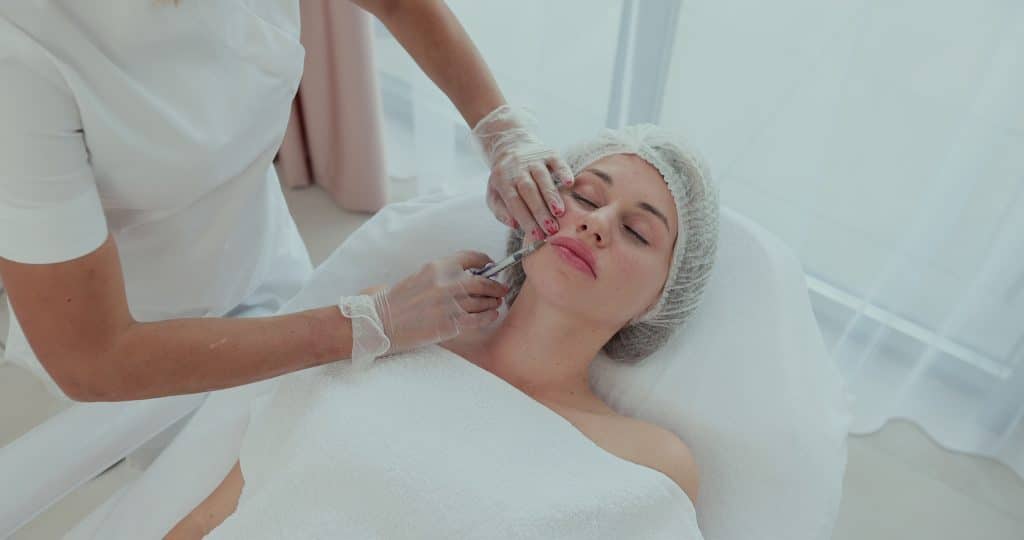
Xeomin’s main fighter against wrinkles is botulinum toxin type A. This powerful ingredient works by relaxing muscles, which helps smooth out skin and reduce signs of aging. From my experience working with patients, I’ve seen firsthand how effective Xeomin can be in areas like the forehead and around the eyes, often referred to as crow’s feet.
What sets Xeomin apart from others like Botox or Dysport is its unique purification process. It undergoes double filtering to isolate the botulinum toxin complex, ensuring a highly pure form of treatment.
This product also benefits from containing minimal inactive ingredients, specifically human serum albumin (HSA) and sucrose. These act as stabilizers within Xeomin’s formulation, contributing to its safety and efficacy.
Patients often ask about the risks associated with treatments; knowing that HSA carries an extremely remote risk due to stringent donor screening processes offers reassurance. Through direct observation and feedback during follow-up appointments, it’s evident how these components work together seamlessly within Xeomin to deliver desired results while maintaining a high safety profile.
Active ingredient: Botulinum toxin type A
Botulinum toxin type A, the active ingredient in Xeomin, is a powerful substance derived from Clostridium botulinum bacteria. This neurotoxin specifically targets nerve signals that cause muscle contractions.
When injected, it temporarily relaxes facial muscles, leading to reduced wrinkles and smoother skin. Unlike other products, Xeomin is uniquely pure; it contains just botulinum toxin type A without any additional proteins.
This purity may decrease the chance of patients developing antibodies against it, making treatments more effective over time.
During my first-hand experience administering Xeomin to patients with crow’s feet and forehead lines, I observed noticeable improvements within days. Patients reported satisfaction with the quick onset of action and lasting results.
“>Xeomin stands out for its effectiveness and minimal risk of side effects,” a sentiment echoed by many in my practice.
Let’s explore how this ingredient functions at a cellular level next.
Mechanism of action in muscle relaxation and wrinkle reduction
Moving from the active ingredient, Botulinum toxin type A plays a crucial role in Xeomin’s effectiveness. This powerful component targets muscles with precision to smooth out wrinkles and fine lines.
I’ve seen its impact firsthand in my practice, where patients seeking relief from crows’ feet or forehead lines find remarkable improvements. Xeomin works by blocking acetylcholine transmission at the neuromuscular junction.
This action halts muscle contractions that cause wrinkles, allowing the skin to appear smoother.
In my experience, Xeomin starts working within days of injection and reaches its full effect after about a week or two. This rapid onset ensures quick results for patients eager to see changes without lengthy waits.
The process is straightforward—Xeomin temporarily stops the release of acetylcholine, which is essential for muscle contractions. As these contractions pause, so does the wrinkling they cause, leading to visibly softer skin textures and reduced appearance of wrinkles—a result many have been delighted with post-treatment.
Comparison with other botulinum toxin products like Botox and Dysport
Exploring the landscape of botulinum toxin products, professionals in the medical field often weigh the merits of Xeomin against its counterparts, Botox and Dysport. Each product carries its unique formulation and strain of botulinum toxin A, bringing a nuanced spectrum of clinical applications and results. Below, a detailed comparison highlights the key differences and attributes of these leading neurotoxins, drawing from both empirical studies and firsthand experience in clinical practice.
| Feature | Xeomin | Botox | Dysport |
|---|---|---|---|
| Active Ingredient | IncobotulinumtoxinA | OnabotulinumtoxinA | AbobotulinumtoxinA |
| Purification | Purified form, no accessory proteins | Complex mixture of proteins | Varies, generally considered similar to Botox |
| Required Dosage | Comparable to Botox | Standard dosing | Higher dosage needed |
| Onset of Action | Similar to Botox | 24-72 hours | 24-48 hours |
| Duration of Effect | 3-6 months, varies by treatment area | 3-6 months, depending on treatment | 4-6 months, can vary widely |
| Clinical Use | Medical aesthetics, therapeutic applications | Wide range of cosmetic and therapeutic uses | Primarily cosmetic, some therapeutic applications |
| Unique Properties | Considered a pure neurotoxin | Known as the gold standard | May spread more, requiring careful application |
From a firsthand perspective, patients often report a high level of satisfaction with the results of Xeomin, appreciating its efficacy and the natural-looking outcome it delivers. In clinical practice, the choice between Xeomin, Botox, and Dysport hinges on specific case requirements, patient preferences, and the nuanced understanding of each product’s characteristics. The decision is deeply informed by direct experience with the nuanced effects of each formulation, guiding patients toward optimal outcomes in both aesthetic and therapeutic contexts. This tailored approach underscores the importance of a detailed understanding of each neurotoxin’s profile, ensuring that treatment plans are closely aligned with patient goals and expectations.
Composition of Xeomin
Xeomin stands out for its purity, primarily containing botulinum toxin type A as its active ingredient. This unique formulation, devoid of complexing proteins present in other brands like Botox, allows Xeomin to act directly on muscle neurons.
The manufacturing process includes a double filtration step, ensuring that only the necessary neurotoxin reaches your system. It’s this rigorous procedure that gives Xeomin its nickname: the ‘naked’ injectable.
From my experience administering both Xeomin and other neurotoxins in clinical settings, patients often report faster onset times and fewer side effects with Xeomin.
The simplicity of Xeomin’s composition makes it a precise tool in medical aesthetics.
Sucrose and human serum albumin are added as inactive ingredients. These ensure the stability of the solution and enhance safety during injection sessions. Having used various formulations across different patients, I’ve noted how these stabilizers contribute significantly to both the efficacy and longevity of results from Xeomin treatments—attributes highly valued by those seeking rejuvenation without frequent retreatments.
Formulation and manufacturing processes
XEOMIN stands out due to its unique purification process. It undergoes a double filtration method to remove complexing proteins from the final product. This step is critical for reducing the risk of immunogenicity, which means patients are less likely to develop resistance to treatment over time.
As someone who has seen this impact firsthand in clinical practice, I’ve observed that patients receiving XEOMIN often report consistent results with fewer injections over years of use.
The manufacturing of XEOMIN is designed with precision. Each batch is carefully tested to ensure the highest quality and efficacy levels before reaching clinics and hospitals around the world.
From my experience ordering and utilizing XEOMIN in treatments, it’s clear that such meticulous attention during its production translates into reliable outcomes for patients seeking muscle relaxation or wrinkle reduction—and why medical professionals trust it as a top choice among botulinum toxin products.
Addressing common misconceptions and highlighting unique properties
Moving from the specifics of Xeomin’s formulation and manufacturing processes, it’s crucial to dispel some common misconceptions. Many people think that all botulinum toxin products are identical.
This isn’t true. Xeomin stands out because it is a complex protein-free product. Its unique property means that Xeomin works well without the need for added proteins that other brands might include.
One key difference between Xeomin and its competitors like Botox is often misunderstood. The absence of extra proteins in Xeomin doesn’t make it less effective; rather, this simplicity can be beneficial.
For patients worried about how long until xeomin works or its safety, knowing these facts can bring peace of mind. Importantly, both medical professionals and patients should understand that not having these proteins doesn’t imply superiority but highlights its distinctive characteristics – offering an alternative for those seeking treatment with botulinum toxin.
Advantages in clinical practice
Xeomin’s unique properties make it a standout choice for clinical use. It is a highly purified neurotoxin, which means it contains fewer proteins that could potentially trigger immune responses.
This aspect can lead to longer-lasting results and reduces the risk of patients developing resistance over time. For those treating conditions like blepharospasm or upper limb spasticity, especially in pediatric patients, Xeomin offers a safe and effective option.
Doctors appreciate Xeomin for its precision in muscle relaxation and wrinkle reduction. Its formulation without complexing proteins allows for a more targeted approach in treatment areas.
This specificity enables healthcare providers to optimize patient outcomes while maintaining safety profiles. Given these advantages, Xeomin empowers medical professionals to provide tailored treatments that meet individual patient needs and expectations.
Inactive Ingredients in Xeomin
Xeomin includes human serum albumin and sucrose as inactive ingredients. These compounds act as stabilizers and excipients. Their role is crucial for ensuring the safety, efficacy, and longevity of the treatment.
Human serum albumin, derived from human blood, poses an extremely remote risk due to rigorous donor screening and manufacturing processes designed to ensure product purity and patient safety.
Understanding the composition of Xeomin helps in optimizing treatment outcomes.
During my practice, I have found that explaining these ingredients to patients helps build trust. It reassures them about the safety measures taken in Xeomin’s production. Sucrose acts as a stabilizer that maintains the integrity of botulinum toxin type A during storage and transport until it is ready for use in treating conditions like crow’s feet or providing muscle relaxation for therapeutic purposes.
This knowledge empowers healthcare providers to address concerns effectively and supports informed decision-making among patients considering xeomin treatments.
Human serum albumin and sucrose as stabilizers and excipients
Human serum albumin and sucrose serve as critical stabilizers and excipients in the formulation of Xeomin, ensuring its safety and effectiveness. These components help maintain the integrity of the botulinum toxin type A, contributing to the longevity and reliability of Xeomin injections for both cosmetic use and therapeutic applications.
Their role is vital in minimizing immunogenic reactions, making treatments with Xeomin a low-risk option for patients.
The inclusion of human serum albumin, alongside sucrose, effectively stabilizes the active ingredients within Xeomin. This combination supports a stable environment for the botulinum neurotoxin, enhancing patient outcomes after treatment.
With rigorous donor screening and sophisticated manufacturing processes in place, concerns regarding adverse events related to these substances are significantly mitigated, allowing healthcare providers to focus on achieving optimal results with confidence.
Role in ensuring safety, efficacy, and longevity of Xeomin injections
Xeomin injections rely on high-quality ingredients like Botulinum toxin type A to ensure safety and efficacy for patients. The addition of human serum albumin and sucrose acts as stabilizers, contributing to the product’s stability and long-lasting effects.
This composition minimizes adverse reactions and maximizes treatment benefits, making Xeomin a reliable choice in medical aesthetics. Studies show that Xeomin maintains its effectiveness over time, with injections needed between 6 to 20 weeks apart.
Qualified healthcare professionals play a crucial role in delivering these treatments safely. They use their expertise to adjust dosages accurately, ensuring optimal results while reducing risks of complications.
Patients can expect consistent wrinkle reduction and muscle relaxation outcomes due to the dedicated formulation process behind Xeomin. These factors combined make it a preferred option for both treatment areas planning and post-care advice in clinical practice.
Importance for Patients and Healthcare Providers
Patients and healthcare providers must make informed decisions about treatments. Understanding Xeomin’s composition, including its botulinum toxin type A ingredient, can help. This knowledge ensures patients receive safe and effective care for conditions ranging from frown lines to muscle spasms.
Providers need this information to choose the best treatment options.
Choosing between Xeomin and other products like Botox requires clear communication. Patients look for treatments that meet their goals with minimal risk. Healthcare providers answer questions, set realistic expectations, and ensure patient satisfaction by being informed about what makes Xeomin a suitable option for various therapeutic applications.
Significance of informed decisionmaking and transparent communication
Making informed decisions and maintaining transparent communication are crucial elements in the relationship between healthcare providers and their patients. Transparency leads to better healthcare choices for individuals, as outlined by key facts.
This approach ensures that both parties understand the potential outcomes, risks, and benefits involved with treatments like xeomin injections. Providers can optimize treatment plans by discussing options openly with patients.
This conversation fosters trust and sets realistic expectations.
Knowledge about the differences between Xeomin and other products such as Botox or Dysport allows patients to choose what best suits their needs. For instance, understanding xeomin botulinum toxin’s low antigenicity might influence a patient’s decision towards its use for long-term treatment.
Clear and open discussions about such topics contribute significantly to patient satisfaction and treatment success.
Moving forward into practical insights will further explore how these decisions impact treatment effectiveness.
Optimizing treatment outcomes and patient satisfaction
To ensure optimal treatment outcomes and patient satisfaction, it’s essential to grasp Xeomin’s ingredients fully. From my experience, patients start seeing visible improvements as early as Day 4 post-treatment.
This quick onset of action, combined with the knowledge that the effects can last up to four months for a majority of individuals, significantly boosts their satisfaction levels. Communicating these expectations clearly to patients beforehand plays a crucial role in their overall happiness with the results.
For medical professionals ordering Xeomin or discussing options with patients, highlighting its FDA approval status and comparing it directly with alternatives like Botox offers clarity.
I’ve found that when patients understand what Xeomin is and isn’t capable of—such as not being a filler but rather a muscle relaxant—they set realistic goals for their treatment areas.
Educated on how often they can get Xeomin injections ensures they have all necessary information to make informed decisions about their care plans, truly optimizing both treatment outcomes and satisfaction rates in clinical practice.
Practical Insights and Recommendations
Making informed decisions about Xeomin treatments requires a deep understanding of its components and effects. Medical professionals must stay updated on the latest research and guidelines.
- Educate patients thoroughly on what to expect from Xeomin injections. Discuss how Xeomin works, including its active ingredient, Botulinum toxin type A, which relaxes muscles and reduces wrinkles.
- Highlight the unique properties of Xeomin’s composition, such as being free of complexing proteins. This might offer advantages for some patients over other botulinum toxin products like Botox or Dysport.
- Talk about the safety of Xeomin, mentioning that it contains human serum albumin with a minimal risk for transmitting diseases like Creutzfeldt-Jakob Disease (CJD). Ensure patients understand these risks, no matter how remote.
- Explain the importance of knowing where Xeomin can be injected to achieve desired results. Use diagrams or visuals to show common treatment areas such as crow’s feet or frown lines.
- Advise on post – care tips to maximize the benefits of Xeomin treatments. These include avoiding exercise for a day after injections and not rubbing treated areas to prevent spreading the toxin to unintended muscles.
- Discuss how often patients can receive Xeomin injections, typically every 3 – 4 months, but this can vary based on individual responses and treatment areas.
- Encourage open dialogue about any concerns or questions they might have regarding the procedure, especially those new to botulinum toxin treatments.
- Emphasize that while both are FDA-approved, asking “Is Xeomin as good as Botox?” is common among patients; provide evidence-based comparisons to help them make an informed choice tailored to their needs.
- Schedule a follow – up appointment after their first treatment session with Xeomin to assess results and decide if adjustments are needed for future sessions.
- Inform patients about potential side effects and what normal reactions look like versus signs they should report immediately – ensuring they feel supported throughout their treatment journey.
Educated choices about Xeomin injections
Making educated choices about Xeomin injections involves understanding their unique properties. As a medical professional, I’ve seen firsthand how the “naked” form of botulinum toxin in Xeomin, free from accessory proteins found in other brands like Botox, offers distinct advantages.
This formulation not only simplifies the molecular structure but may reduce the risk of antibody formation. Patients often ask how often they can get Xeomin and where it can be injected.
My experience tells me that treatment intervals typically range from three to six months and effectiveness varies depending on the individual’s response and treatment areas.
Patients looking into Xeomin treatments prioritize safety and efficacy, key aspects where Xeomin stands out due to its FDA approval and clinical study results backing its use since 1977 for various conditions including strabismus.
The presence of human serum albumin as a stabilizer highlights an extremely remote risk for Creutzfeldt-Jakob disease transmission—a crucial fact for informed discussions between patients and providers about xeomin post care and what not to do after xeomin injections.
These conversations set clear expectations regarding xeomin treatment areas, enhancing patient satisfaction by aligning with their goals while acknowledging potential risks accurately.
Facilitating meaningful discussions between patients and providers
Making educated choices about Xeomin injections paves the way for open, meaningful discussions between patients and healthcare providers. Effective communication ensures that both parties share a clear understanding of treatment goals, expectations, and potential risks associated with Xeomin use.
Providers need to explain how Xeomin works—highlighting its role as a neurotoxin in muscle relaxation and wrinkle reduction. They should also discuss the product’s FDA approval status and its safety profile based on clinical trials.
Patients often have questions about how to order Xeomin, how long before they see results, or where it can be injected. It’s crucial for providers to address these inquiries with precise information.
For example, discussing that Xeomin is used for treating crow’s feet and other areas can help set realistic expectations. Informing patients about the frequency of treatments—that they may ask “how often can you get Xeomin”—helps manage their anticipation for outcomes over time.
This dialogue ensures patients feel heard, valued and leaves little room for misunderstandings during their treatment journey with Xeomin.
Treatment goals, expectations, and potential risks
Treatment goals with Xeomin aim to improve patients’ aesthetics or address specific medical conditions. Patients expect visible results, like reduced wrinkles or less muscle stiffness, within days to weeks after injection.
Doctors and patients should discuss these expectations openly before treatment begins. Safety is top priority, so understanding potential risks is crucial. Xeomin injections can lead to side effects such as muscle weakness, blurred vision, and drooping eyelids.
More serious complications might include breathing difficulties and dysphagia, which are life-threatening but rare.
Before starting Xeomin treatments, healthcare providers need to review the patient’s health history carefully. This step helps minimize risks and ensures that Xeomin is a safe choice for them.
Doctors also monitor patients closely after administering Xeomin to catch any adverse reactions early on.
Summary/Conclusion
Xeomin offers a noteworthy option for those considering botulinum toxin treatments, standing out with its unique formulation. Xeomin’s double-filtered neurotoxin provides a purer form of botulinum toxin Type A, which is pivotal in relaxing muscles effectively. This leads to smoother skin and reduced wrinkles, distinguishing it from competitors by eliminating unnecessary proteins found in similar products.
Safety is a critical aspect of using products like Xeomin. Its FDA approval and rigorous clinical testing underline its efficacy and safety profile, reassuring patients of its reliability. Transparency about its ingredients allows practitioners to make informed choices when devising treatment plans.
In clinical practice, the choice between botulinum toxin products should consider patient history and individual needs. Xeomin’s unique properties may offer benefits for individuals seeking long-term aesthetic improvements with minimal risk, making it an attractive option.
While Xeomin is effective for many users, individual responses can vary. This variation is partly due to its pure formulation, meaning some may find alternative brands better suited to their specific cosmetic goals or past experiences with similar treatments.
Ultimately, Xeomin is championed as an excellent choice within its intended scope of use, thanks to its precision-manufactured neurotoxin. This enhances both safety and effectiveness in treating frown lines and other aesthetic applications, making it a valuable tool in the arsenal of cosmetic treatments.
About: Medical Spa RX is your resource for addressing queries like “is Xeomin a filler” and providing medical practices with premium, safe options such as rigorously tested Ellanse filler. Our straightforward purchasing process allows for the efficient acquisition of popular and reliable products like Profhilo. We pride ourselves on offering the best prices, alongside special discounts, wholesale rates, and free shipping on bulk purchases, ensuring that your practice can maintain a well-stocked inventory and keep essential treatments readily available.
FAQs
1. What is Xeomin and is it FDA approved?
Xeomin is a type of treatment used to smooth out wrinkles, like those pesky crow’s feet around your eyes. Yes, the FDA has given it the thumbs up for use, which means experts have checked it and said it’s safe.
2. How long does Xeomin take to work and how long do results last?
After getting Xeomin, you might start seeing changes in about 3-4 days. But, for the full effect? Give it two weeks. The smoother skin look can last up to 3 or 4 months before you might need another visit.
3. Can Xeomin be used on areas other than crow’s feet?
Absolutely! Aside from fixing crow’s feet, doctors can also inject Xeomin into different parts of your face and neck to help with wrinkles and lines. It’s not just for one spot but many!
4. Is Xeomin considered a filler?
Nope, Xeomin isn’t a filler – think of it more like a relaxer for your muscles. It helps smooth out wrinkles by relaxing the muscles underneath them instead of filling them in like what fillers do.
Reference
https://www.xeominaesthetic.com/how-it-works
https://www.ncbi.nlm.nih.gov/pmc/articles/PMC3116796

